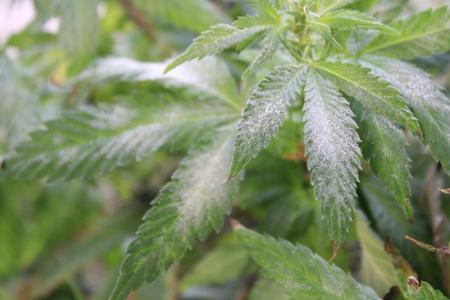
Cannabis cultivation requires meticulous care and attention to detail to ensure the highest quality end product. One of the challenges growers face is the potential growth of mold, which can significantly compromise the integrity and safety of the crop. Mold on cannabis not only affects its appearance but also poses health risks if consumed. In this guide, we’ll delve into what mold on cannabis looks like and how to identify it.
1. Fuzzy or Powdery Texture
Mold on cannabis often appears as a fuzzy or powdery white substance. It may resemble cobwebs or cotton-like growth on the surface of the buds, leaves, or stems. This type of mold is commonly known as powdery mildew and thrives in warm, humid environments. While it initially manifests as white, it can transition to gray or brown as it matures.
2. Dark Spots or Discoloration
Another telltale sign of mold on cannabis is the presence of dark spots or discoloration. Mold-infected areas may appear dark green, brown, or black, contrasting with the healthy green color of the plant. These spots often spread rapidly and can be found on the surface of the buds or leaves.
3. Musty Odor
Mold growth on cannabis is often accompanied by a distinct musty or earthy odor. While cannabis naturally possesses aromatic compounds, the smell of mold is unpleasant and distinct. If you detect an unusual odor emanating from your cannabis, it’s essential to inspect it closely for signs of mold.
4. Slimy Texture
In advanced stages of mold infestation, cannabis may develop a slimy or slippery texture. This is particularly common in cases of bud rot, where the mold penetrates the interior of the buds, causing them to become soft and mushy. Mold-infected buds may feel wet or sticky to the touch, indicating decay and decomposition.
5. Visible Spores
Under magnification, mold on cannabis may reveal visible spores, which appear as tiny structures resembling seeds or dust particles. These spores are reproductive structures produced by the mold and can easily spread to other areas if not addressed promptly. Inspecting cannabis under a magnifying glass or microscope can help detect the presence of spores.
Conclusion
Identifying mold on cannabis is crucial for maintaining product quality and consumer safety. By familiarizing yourself with the visual cues and characteristics of mold growth, you can take proactive measures to prevent contamination and ensure the integrity of your cannabis crop. Regular monitoring, proper ventilation, and humidity control are essential strategies for mitigating mold risk in cultivation facilities. Remember, when in doubt, it’s always better to err on the side of caution and discard any cannabis suspected of mold contamination.
Stay vigilant, stay informed, and keep your cannabis crop mold-free for a healthier, happier harvest!
Ready to Stop Powdery Mildew?
Fill out a simple form to get pricing for AiroClean420.





